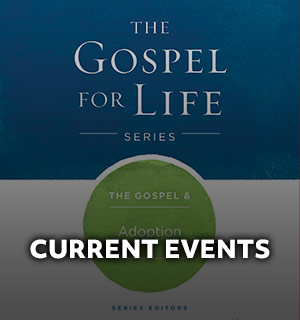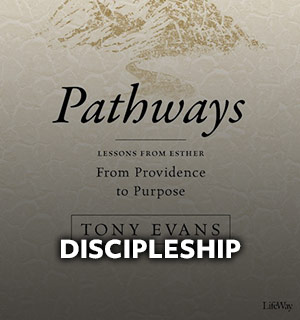
By Landry Holmes
Recently—while I attended a Zoom meeting with work colleagues—my wife was participating in a virtual tea party with our three-year-old granddaughter, MR, who lives in another state.
To prepare for the experience, “Grams,” as my wife is known to our grandchildren, cooked and mailed a batch of chocolate chip cookies to MR’s house.
At a set time they sat at their respective kitchen tables, drank “tea” (chocolate milk), and ate chocolate chip cookies, while they communicated via video. MR even dressed up for the occasion!
The world of virtual gatherings has become commonplace for our children. For digital natives this territory is familiar.
However, just like the adults in their lives, preschoolers and kids are ready to see their friends in person. And, we need to prepare for the regathering of families at church.
What we as church leaders do now, prior to preschoolers and kids regathering at church, can provide parents with assurance that when they do bring their children to church, we’ll do all we can to ensure their safety and well-being.
Two areas that need our attention prior to and following gathering again at church are our environments and our policies and procedures.
When families initially come back to our church facilities, they may stay together as family units in congregational worship for several weeks before the kids ministry space reopens.
The precautions our churches take during this initial “everyone together” phase will influence how parents perceive whether or not we’ll keep their children safe in the future when they start attending small groups and kids worship experiences.
Parents will observe these types of practices:
- Are common areas kept and clean? Consider posting signs that read, “For your safety, this area is being deep-cleaned regularly” or “This area is cleaned after each service.”
- Are restrooms accessible? Consider limiting restroom use to one individual or one family unit at a time. Make sure restrooms are cleaned between each use.
- Is everyone wearing a mask before and after services? If so, we can help alleviate kids’ fears by smiling behind that mask. Even if our face is covered with a mask, we can smile with our eyes and speak with gladness in our voice.
- Are individuals and families practicing social distancing? We like to hug and shake hands at church, but now is the time to refrain from doing so. Instead we can post fun signs that suggest we say, “Hello,” with a wave or an air high five. Also, we can provide seating arrangements in the worship center that help family units sit together while distancing themselves from others. We will probably want to remove couches and chairs from other areas where people gather.
- Are people encouraged to stay at home when they’re not feeling well? We don’t like to discourage people from coming to church; however, we want to keep everyone safe. We may want to consider taking individuals’ temperatures prior to entering the worship center.
- If we provide “big church” bags, we’ll want to send them home with families and not reuse them for other families. To encourage contactless distribution of activity pages or worship guides, we can hang the pages on temporary clotheslines using plastic clothespins that can be cleaned between services.
If we do these things well, parents may be open to leaving their children in our care in the future.
As preschoolers and children start regathering in the kids ministry space, we need to continue what we’ve been doing and extend those practices to meet the needs and expectations of families.
Finding ways to maintain personal space during kids gatherings, and elevated cleanliness practices will be essential.
As a first step, we should evaluate our kids ministry space before reopening. In doing so, we may want to find larger spaces as a temporary solution in order to maintain social distancing.
We also should consider providing additional classes to prevent over-crowding, while maintaining appropriate teacher/child ratios.
Another way to keep classroom sizes manageable for safety purposes is to limit the maximum number of children in each room, which could include asking families to pre-register their children each week to reserve their spaces.
Other things we can start doing now include:
- Deep clean any areas that need attention before people return to church. This is the time to move furniture, wash carpets, and sanitize.
- Disinfect all frequently touched surfaces: light switches, doorknobs, counters, sinks, check-in screens, pens, and so on.
- Evaluate the furniture, toys, and supplies in each room. Simplify as much as possible. Some items may need to move to storage temporarily.
- Look for cloth items (chairs, couches, rockers) to move to storage.
- Encourage parents not to leave diaper bags in the preschool area. Provide plastic baskets, plastic baggies, or bins to store each baby’s items during the session.
- Preset the small group and large group rooms before kids arrive by removing chairs or by spacing chairs.
- Prepare signage such as “STOP: This activity is full! Go to a different activity and try this one again later” and “GO: This activity is open for you to join right now!” Also, post how-to hand-washing signs that are kid friendly.
- Additional ideas are discussed in a free ebook: 6 Considerations for Reopening Your Kids Ministry.
Once the kids ministry area is in use, we’ll want to make sure we keep it clean.
Common areas and classrooms should be disinfected as often as the areas are used, usually before and after children and leaders are in these areas.
Common supplies should be disinfected after they’re used or before another child has contact with the supplies.
We should consult the Environmental Protection Agency for recommended disinfectant solutions that are appropriate and safe.
And, as we consider how often to clean and disinfect common areas, we should consult with the Centers for Disease Control and Prevention for updated suggestions on procedures and best practices.
Closely tied to our thorough preparation of the worship and learning environments is the adherence to our policies and procedures. Make sure to review and update your policies and procedures in light of new COVID-19 protocols.
Now is the time to evaluate and address best practices around hygiene, wellness, and cleanliness. In addition, we can consult with our church’s legal advisors and insurance providers so they can review our current and updated policies in light of new operational considerations.
In order to assure parents that we’re following these policies and procedures, it’s important to provide signage such as the following. These and other printable posters are available at lifeway.com/6considerations:
- VOLUNTEERS! Remember to sanitize toys after every use!
- Please use hand sanitizer before entering this area!
- Remember to practice social distancing in this area!
- WELCOME! For your safety, this area is being deep cleaned regularly!
- Please allow a volunteer to check you in!
- PARENTS! Please limit to one adult for drop-off and pickup. THANK YOU!
As we finalize our policies and procedures, we also need to stay ministry minded.
One wise kids ministry leader reminded me recently, “Be sure you set up rules you know you can sustain. If things are too complicated, it will be easy for volunteers to give up and not do them.”
Once you have an idea for regathering, make sure you have buy-in from key leaders. The best way to do this is to invite their input early and involve them in the final planning. Then, clearly communicate the plan with the church and with parents.
Clear communication is vital. The extent to which parents are aware of our plan has a direct correlation to their confidence that we will keep their children safe.
We can be extremely prepared for preschoolers and elementary kids; however, if parents don’t know the level of our preparedness, they may not have the assurance they need to regather at church with their families.
Finally, as someone encouraged me recently, look to God to do something new in this strange season in which we find ourselves.
“Look, I am about to do something new; even now it is coming. Do you not see it? Indeed, I will make a way in the wilderness, rivers in the desert” (Isaiah 43:19).
LANDRY HOLMES (@lrholmes) is publishing manager for Lifeway Kids.








